John Hurrell – 30 May, 2018
Many of these sculptures are so small the chances are that you will miss some of them on your first visit. They hide within the large expanses of wall and floor. With the former I found that, because I wear spectacles that go dark when I'm in sunshine, it was easier to detect some works by peering over the top of my glasses—because the wall was lighter, providing greater contrast. With the floor, you have to look carefully where you put your feet, and look for hiding places behind pipes or in dark corners.
In this exhibition that with its Spinning title refers to the fairytale Rumpelstiltskin, and with some of its filament-like items, the companion story Rapunzel, Peter Robinson teams up with the Malaysian artist Philip Lai. Lai is in Gallery One, and Robinson in the larger Gallery Two. Some of Robinson’s spiralling wire works on the walls look like human hair, and Lai’s two low tables with circular holes could refer to the angry Rumpelstiltskin stamping holes through the floor.
Both rooms seem to look at seventies minimalism: Lai at the shallow spaces within the sculptural reliefs of Donald Judd, Robinson at the early wire wallworks of Richard Tuttle. They seem inspired by these precursors and take their sculpture in exciting new directions.
Lai presents two very low, dark grey, different sized tables with circular basins or holes (a bottomless basin) in their centres. You get spatially confused between the plane of the gallery floor and the thicknesses of the rims, when comparing the two. There are delicate scratch marks on the top flat surfaces that fit in well with the extreme fineness of Robinson’s contributions next door. The two hollow circles also seem like ventilation ducts or parts of a giant pair of binoculars peering downwards, examining the foundations of the building.
In Gallery Two Robinson divides up the space with large squared grids of thin aluminium wire that—while hard to detect—have been coloured pink, gold or purple. Robinson has experimented with grids before, but one of the big surprises of this show is his use of tiny magnets where they are used with pins, brads and paperclips to make furry clusters, ‘stick insects’ or dangling, suspended chains.
Many of these sculptures are so small the chances are that you will miss some of them on your first visit. They hide within the large expanses of wall and floor. With the former I found that, because I wear spectacles that go dark when I’m in sunshine, it was easier to detect some works by peering over the top of my glasses—because the wall was lighter, providing greater contrast. With the floor, you have to look carefully where you put your feet, and look for hiding places behind pipes or in dark corners.
Because of the thinness of the wire, bright white, background light tends to make its linear form more diffuse, and fainter. Dematerialised and evanescent, the configurations become intricate drawings, sometimes like unravelling birds’ nests that have a quick flash of reflected colour as you walk past.
Other works are about carved, rough-hewn, anodised aluminium, in the form of long skinny poles or small balls that are single or on the floor in groups, or joined up and stacked like little Brancusi columns. One other item is a large pile of silver aluminium off-cuts (tiny bits of ground-off metal) called Swarf; a strange mound that very gradually gets spread as people try to walk around it to look at the nearby wallworks. Another is a long straight bar of what seem to be lined-up, coloured rainbow blocks.
Spinning is a fun show that teases you with its careful restraint. You have to concentrate on looking over every square inch of the gallery. It celebrates ‘the white cube’ and—within it—miniscule items that are compleltely dependent on a clean uncluttered space.
John Hurrell
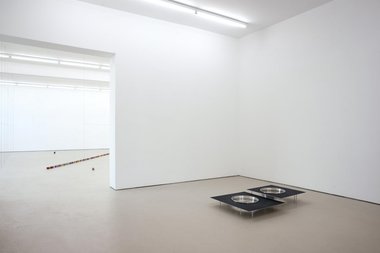
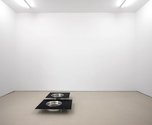
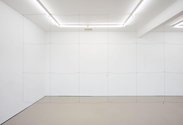
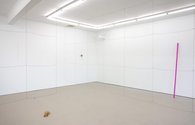
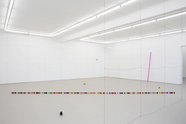
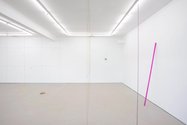

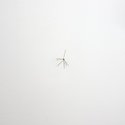
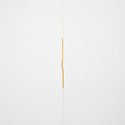
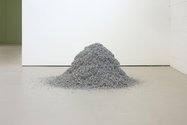


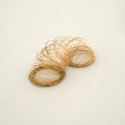


 Advertising in this column
Advertising in this column Two Rooms presents a program of residencies and projects
Two Rooms presents a program of residencies and projects



This Discussion has 0 comments.
Comment
Participate
Register to Participate.
Sign in
Sign in to an existing account.